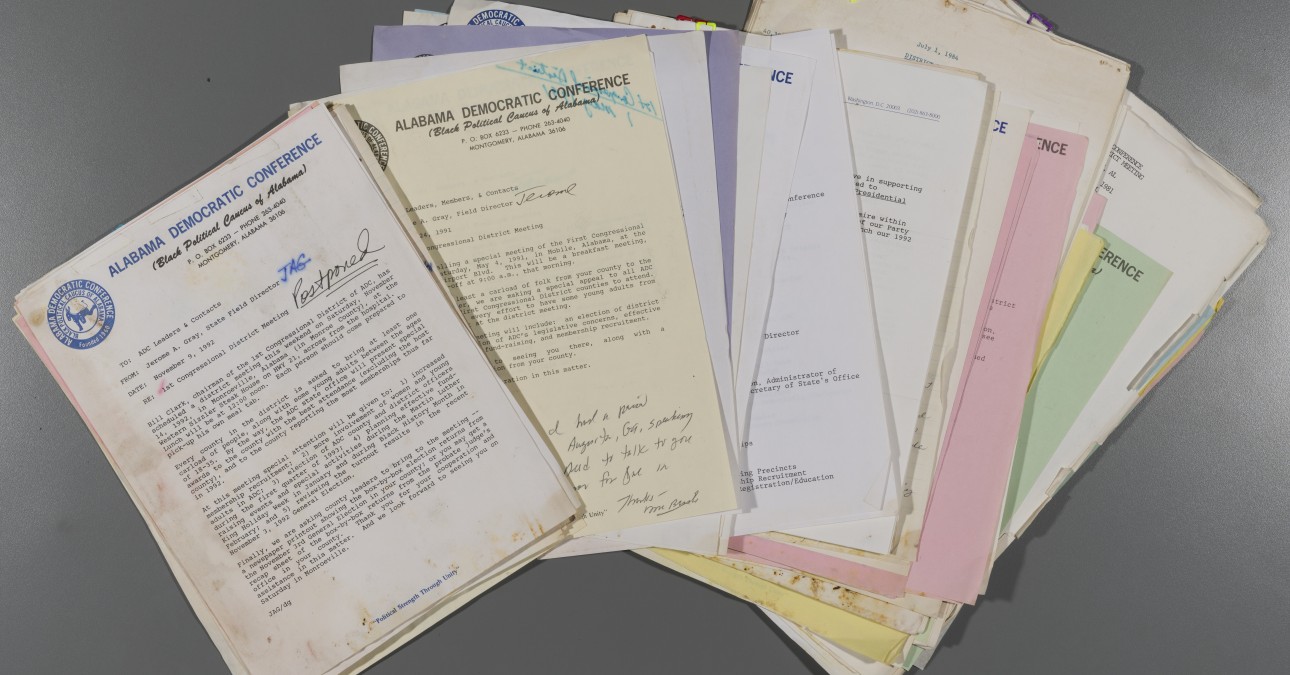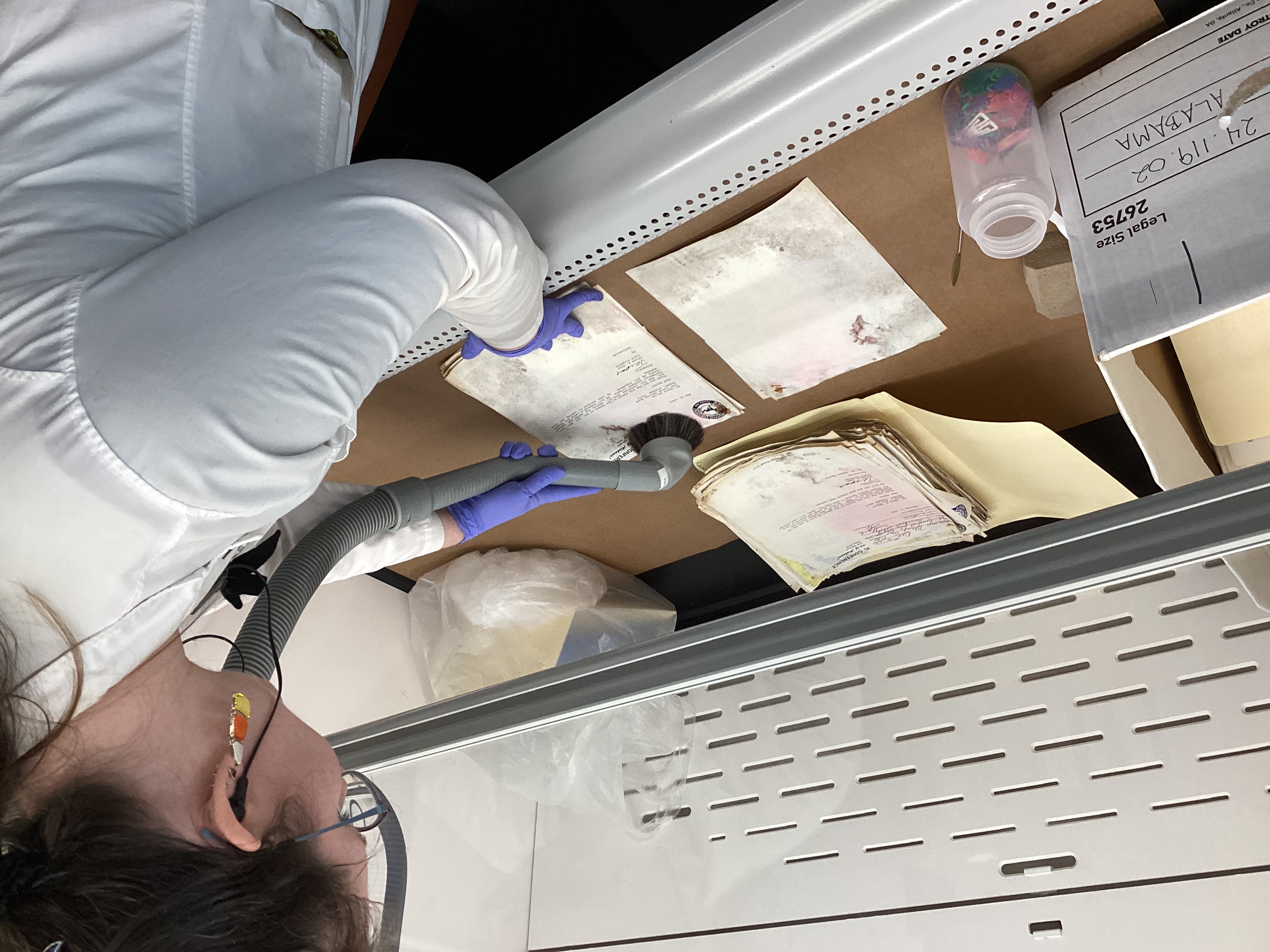
Building Capacity: Alabama State University Archives
Documents that illuminate the histories of two notable Black organizations in Alabama are being treated at the Conservation Center for Art & Historic Artifacts (CCAHA), thanks to a Humanities Collections and Reference Resources award from the National Endowment for the Humanities (NEH). In addition to making these records accessible for public research, the project is a wonderful example of the kind of long-term collaboration that can start when collections care professionals connect with CCAHA through our education programs and fundraising assistance services.
In 2016, the Alabama State University Archives received a donation of almost 200 legal boxes from politician and activist Dr. Joe Reed, Vice-Chair of Minority Affairs of the Alabama Democratic Party. The boxes contained scores of records from the Alabama State Teachers Association (ASTA) and Alabama Democratic Conference (ADC).
Dr. Janice Franklin, Dean of Library and Learning Resources at Alabama State University, explains that “the papers of the ASTA and ADC chronicle the story of African Americans in Alabama politics and in education during a time when Black people struggled for their civil rights.”
The ASTA was formed in 1882 to promote funding for African American education, later fighting for voting rights and desegregation of public schools and eventually merging with the previously segregated Alabama Education Association in 1969. The ADC formed in 1960 as the Black Political Caucus of Alabama and continues to promote candidates and legislation that improve Black communities.
But in order to safely process the collection, something needed to be done about a mold outbreak affecting 30 of the boxes.

In 2021, Alabama State University Archivist Raegan Stearns attended CCAHA’s Building Capacity Fundraising Clinic, an online course made available through the HBCU Library Alliance and presented by our Regional Heritage Stewardship Program, which serves areas including the Deep South. Raegen reached out to CCAHA’s former Director of Development Lee Price to determine what CCAHA could do to help.
"During my meeting with Lee,” Raegan says, “we discussed the services CCAHA offers, discussed some of our archival collections most in need of conservation work, and helped identify some possible funders. A year later, I decided to try for the NEH grant, and CCAHA put together a team to help advise the project and draft the proposal."
When working with hazardous collections, whether due to mold or other substances, CCAHA staff members are careful to wear protective gear, and work is performed under a special ventilated enclosure called a fume hood. For this project, every individual leaf of paper will be examined and aspirated with a HEPA filtered vacuum before receiving additional treatment, if necessary.
The timeline for the entire treatment and rehousing is two years, including a period at the conclusion for the Archives to integrate the material back into the collection, launch finding aids, and inform the academic community that the records are available.
“Saving these documents,” Dr. Franklin says, “is important to preserve the legacy of Black people in education and Alabama politics for future generations to come.”